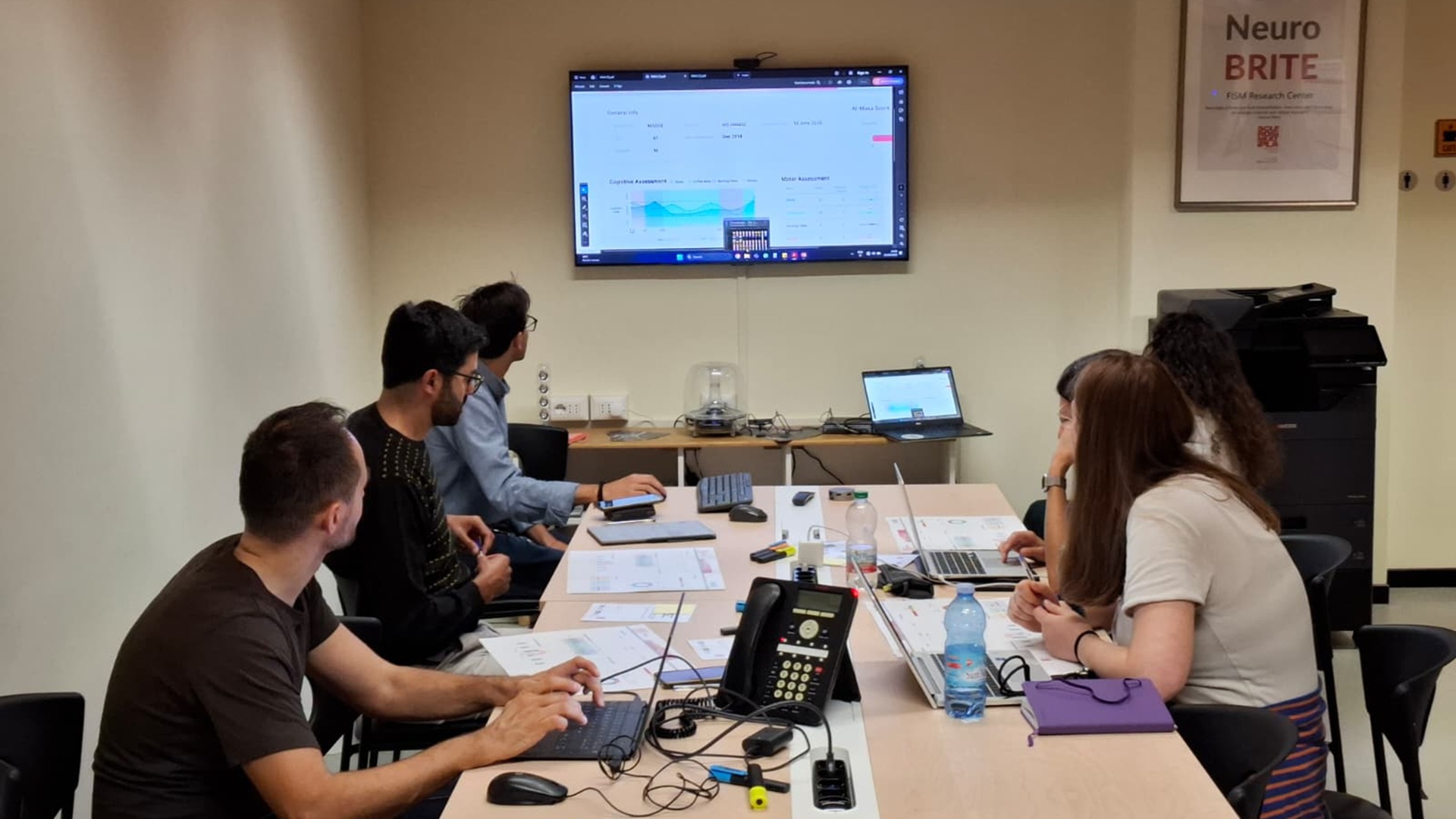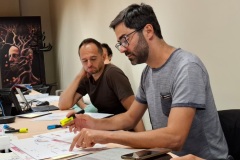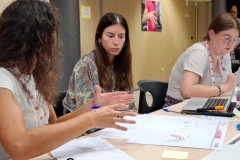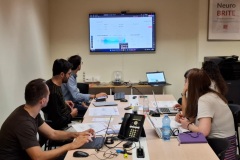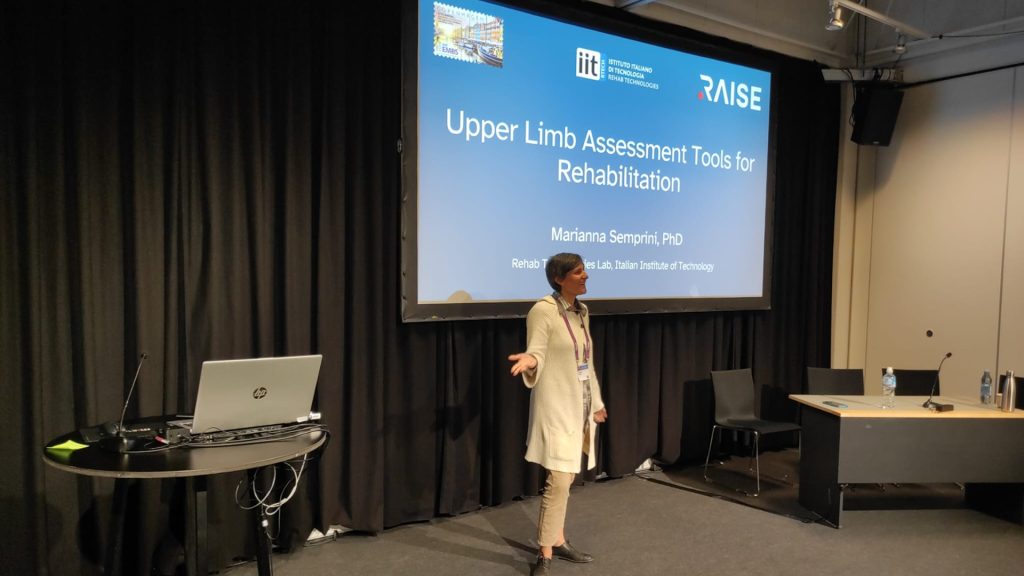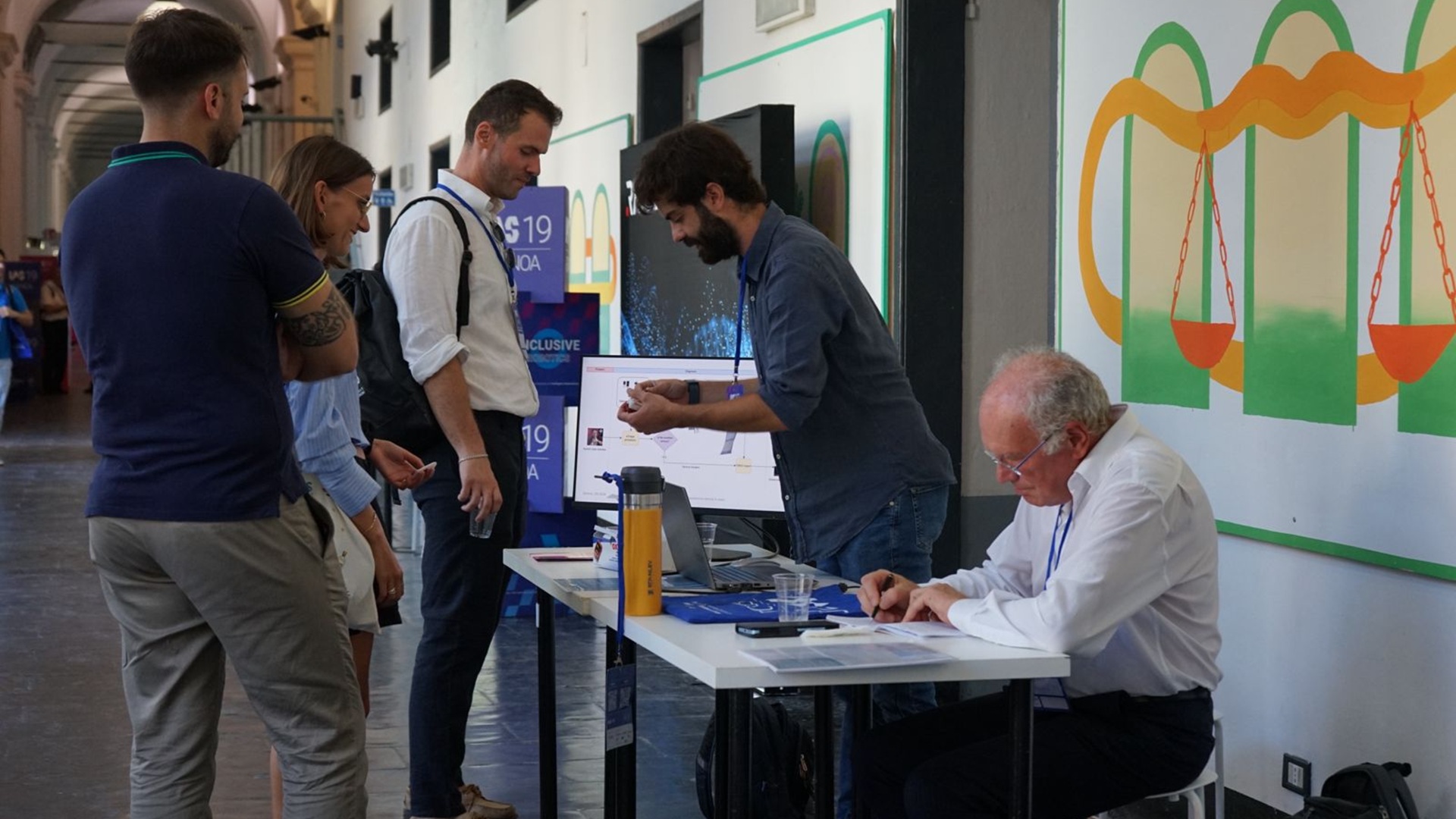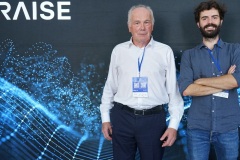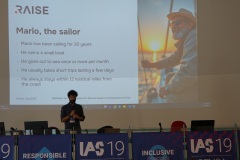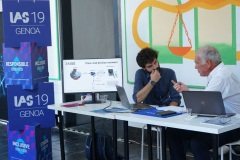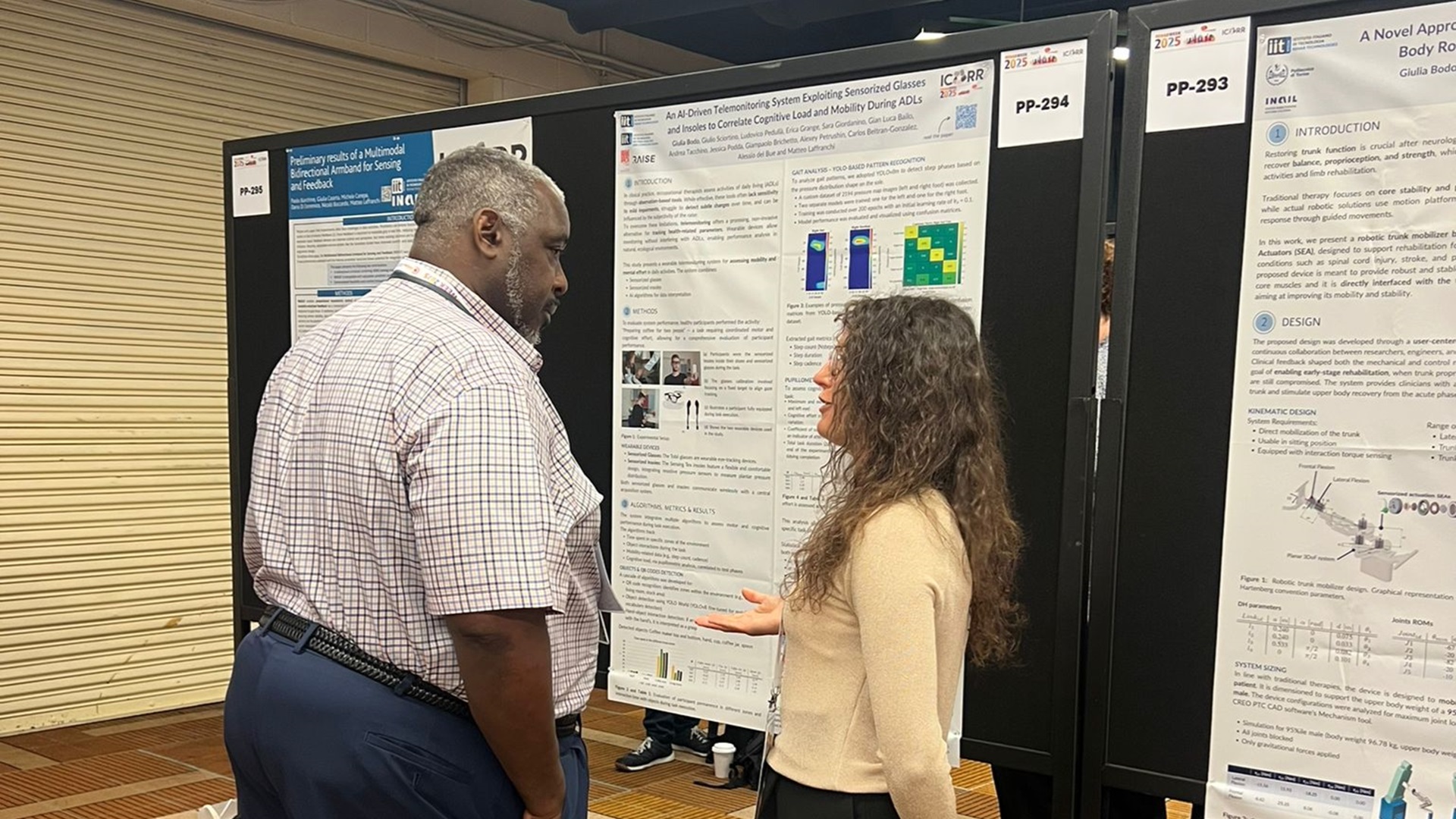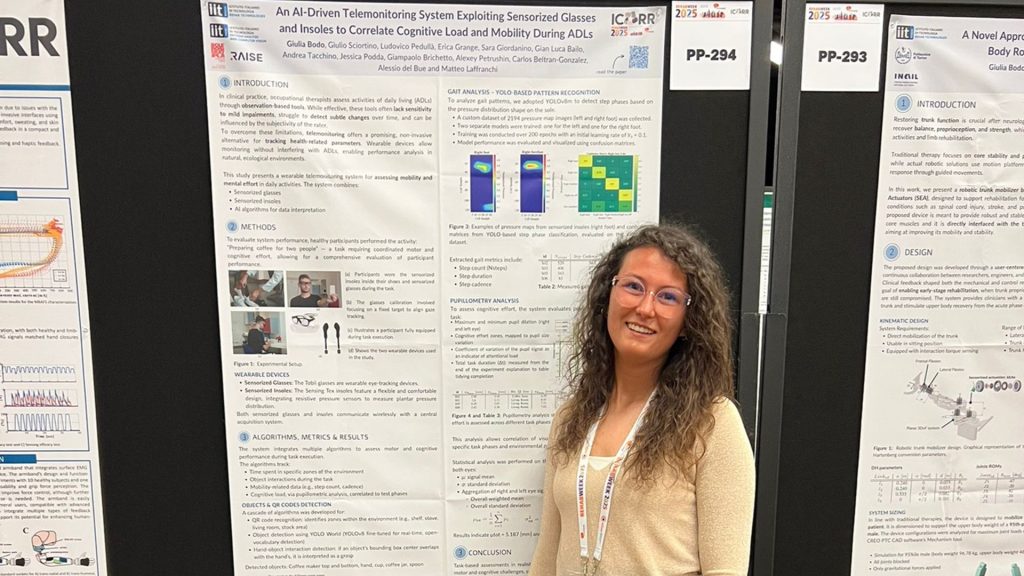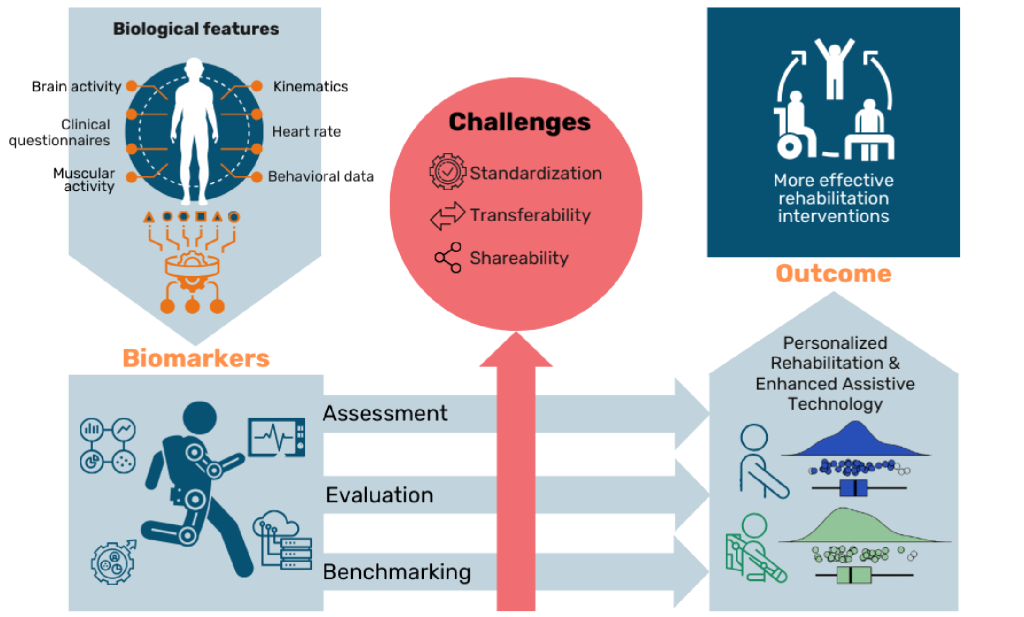In recent weeks, the RTECH and PAVIS groups from IIT, part of Spoke 2 of the RAISE project – focused on the development of sensorized rooms – organized a series of co-working sessions with clinical partners at the Gaslini Hospital, FISM and Galliera Hospital.
These meetings offered a concrete opportunity for researchers, engineers, physicians, and therapists to exchange ideas, share strategies to rationalize experimental results, and design practical support tools for daily clinical practice.
During the sessions, the group presented the data collected through three study protocols approved by the Territorial Ethics Committee, illustrating the different types of patients involved and the methods used to acquire biometric signals in the sensorized rooms. The project, which aims to integrate technological and clinical expertise, has now reached an advanced stage of its experimental activities.
The research conducted at FISM involved subjects with multiple sclerosis and healthy control groups, while at Galliera Hospital the work focused on the geriatric population, including patients with major neurocognitive disorders, subjects with sarcopenia, and healthy individuals hosted in the sensorized apartment. Also at Galliera, the group monitored day-hospital patients to assess posture at rest and fall risk. Meanwhile, at Gaslini Hospital, children with hemiparesis and their caregivers were studied, exploring the potential of sensorized technologies to analyze movement and the spatial relationship between adult and child.
At the Erzelli laboratory, the team collected data on healthy child–caregiver dyads and, in collaboration with the IIT HSP group, on adult subjects performing locomotion tasks assisted by the R1 robot. The goal was to study variations in gait and interaction strategies that could be adopted to guide subjects during movement in unfamiliar environments.
The dataset gathered through these activities provided a solid foundation for the subsequent analysis phase. To make the most of it, the group organized a series of workshops and brainstorming sessions with clinical partners to identify the most meaningful metrics derived from the sensors and to define clear, accessible, and operationally coherent ways to visualize the results.
During these sessions, the need for customized dashboards emerged—tools capable of quickly displaying the most relevant information for patient assessment and monitoring. Participants jointly analyzed case studies, discussing which indicators were most useful in each clinical context and how to translate them into intuitive visualizations that could facilitate data interpretation and decision-making.
These co-design activities marked an important step in integrating research with clinical practice. Direct collaboration with healthcare professionals made it possible to steer technological solutions toward real needs, strengthening the connection between scientific innovation and patient care.
The work carried out within Spoke 2 thus contributed to the overall mission of RAISE: to create a research and innovation ecosystem capable of developing inclusive and intelligent technologies designed around people and the improvement of quality of life.

